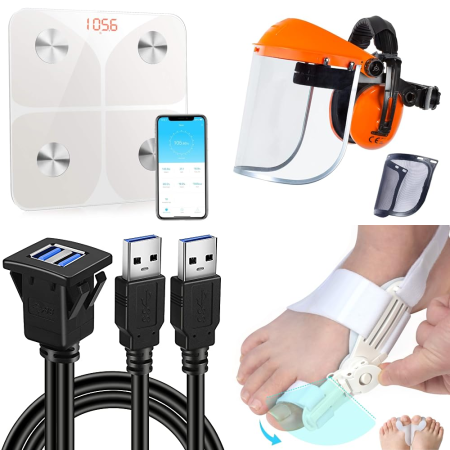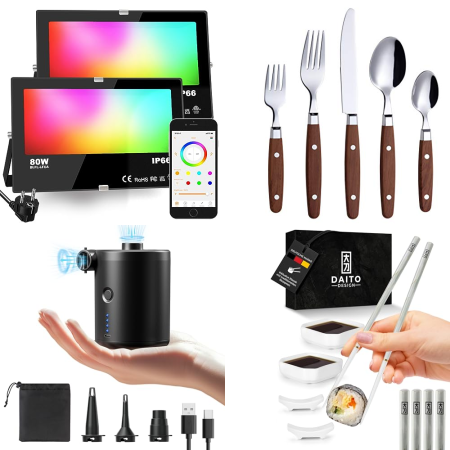Ein Smartphone, das in Paris verkauft wurde, findet innerhalb von 48 Stunden einen neuen Besitzer in Warschau.Bevor es versendet wird, überprüft eine KI-Engine seine Seriennummer, bewertet den Zustand und legt einen Wiederverkaufspreis fest – genau auf den Euro.
Keine Zwischenhändler. Kein Rätselraten. Nur Code.
Dies ist Recommerce in Bewegung – der globale Handel mit gebrauchten Waren, angetrieben von digitaler Intelligenz.Plattformen wie Back Market und Vinted definieren „Secondhand“ nicht mehr als „gebraucht“, sondern als „optimiert“. Durch Automatisierung, Datenanalyse und Blockchain-Vertrauensschichten hat Technologie den Kreislaufhandel zu einem der am schnellsten wachsenden Sektoren im Einzelhandel gemacht.

Über Jahrzehnte hinweg war der Gebrauchtwarenhandel fragmentiert – bestehend aus lokalen Secondhandläden, Kleinanzeigen und unbestätigten Peer-to-Peer-Transaktionen.
Doch in den letzten Jahren haben digitale Recommerce-Plattformen dieses System von Grund auf neu aufgebaut.
Sie nutzen KI, Automatisierung, Blockchain und intelligente Logistik, um das einst „Secondhand“-Geschäft in eine schnelle, transparente und datengetriebene globale Industrie zu verwandeln.
Laut Tex Space Today wird der globale Recommerce-Markt bis 2027 voraussichtlich 350 Milliarden US-Dollar überschreiten – angetrieben durch digitale Bequemlichkeit und die wachsende Nachfrage nach Erschwinglichkeit und Nachhaltigkeit.
Wichtige Erkenntnisse
|
1. Von Flohmärkten zu Algorithmen
Früher bedeutete der Kauf gebrauchter Waren Unsicherheit – uneinheitliche Preise, unklare Qualität und mangelnde Transparenz.
Digitale Plattformen haben dieses Problem gelöst, indem sie Vertrauen und Effizienz in Software kodifiziert haben.
Algorithmen übernehmen heute Aufgaben, die einst von Intuition abhingen:
- KI-Modelle analysieren Millionen von Transaktionen, um faire Preise vorherzusagen.
- Maschinelles Lernen erkennt Produktkategorien und Marken anhand von Bildern.
- Empfehlungssysteme verbinden Nutzer mit Artikeln, die sie am wahrscheinlichsten kaufen werden.
Beispielsweise nutzt thredUP maschinelles Lernen, um Secondhand-Kleidung basierend auf Nachfrage, Marke und Zustand zu bepreisen – und passt die Preise in Echtzeit an.
Dieses System verarbeitet täglich Tausende von SKUs und hält den Wiederverkauf profitabel und skalierbar.
Im Elektroniksektor verwendet Back Market standardisierte Testdaten, um sicherzustellen, dass jedes überholte Gerät identische Qualitätsstandards erfüllt, bevor es verkauft wird.
„Der Qualitätsalgorithmus des Unternehmens lernt kontinuierlich aus Kundenfeedback, um zukünftige Aufbereitungsstandards zu verbessern.“
2. Technologie als Vertrauensfaktor
Vertrauen war schon immer die größte Herausforderung im Recommerce.
Wenn Verbraucher gebrauchte Produkte online kaufen, benötigen sie den Beweis, dass das Produkt echt, sicher und wie beschrieben ist.
Künstliche Intelligenz, Expertengutachten und Blockchain-Verifizierung schließen diese Lücke.
- The RealReal verwendet KI-Tools wie Shield und Vision, um über 50 Produktattribute – von Logoabständen bis zur Materialtextur – zu scannen, bevor menschliche Experten Luxusgüter authentifizieren.
- eBay’s Authenticity Guarantee fügt eine professionelle Prüfungsstufe für Kategorien wie Sneaker, Uhren und Handtaschen hinzu.
- Blockchain fungiert als digitaler Notar: eBay hat Patente für Blockchain-basierte Nutzerverifizierung eingereicht, während LVMH’s Aura Blockchain NFT-Zertifikate für Luxusgüter ausstellt und jeden Eigentümerwechsel auf einem manipulationssicheren Ledger speichert.
Blockchain schafft eine dauerhafte, transparente Aufzeichnung des Produktlebenszyklus und verwandelt Authentizität von einer Behauptung in eine Tatsache.
Diese Transparenz verändert die Wahrnehmung von Gebrauchtwaren: Sie verwandelt Recommerce von informellem Wiederverkauf zu verifiziertem Handel.

3. Hinter den Kulissen: Automatisierung und Rückführungslogistik
Während Käufer elegante Apps sehen, findet die wahre Innovation hinter den Kulissen statt – in automatisierten Lagern und Rückführungsnetzwerken.
Recommerce ist logistisch komplex. Jedes Produkt ist einzigartig in Zustand, Verpackung und Wiederverkaufsweg.
Plattformen haben diese Komplexität durch intelligente Automatisierung gemeistert.
Beispiel thredUP:
Pakete werden automatisch gewogen, gescannt, etikettiert und sortiert.
Maschinen drucken Versandetiketten in Echtzeit und leiten jedes Paket über Förderbänder an den richtigen Versandkanal weiter – wodurch die Bearbeitungszeit um bis zu 40 % verkürzt wird.
Ebenso hat Vinted mit Vinted Go einen eigenen Logistikarm aufgebaut, der jährlich über 800 Millionen Pakete abwickelt.
Das Netzwerk aus Abgabestellen und Sammellieferungen reduziert sowohl Lieferkosten als auch CO₂-Fußabdruck.
Im Elektronikbereich betreibt Back Market ein verteiltes Refurbishment-Modell: Geräte werden von unabhängigen Partnern getestet, deren Ergebnisse in eine zentrale Qualitätsdatenbank einfließen.
KI bewertet dann die Zuverlässigkeit jedes Verkäufers, sodass nur verifizierte Anbieter aktiv bleiben.
Mit anderen Worten: Technologie ist die unsichtbare Infrastruktur, die Recommerce schnell, kosteneffizient und nachhaltig hält.
4. Datengetriebene Preisgestaltung und Personalisierung
Die Preisgestaltung gebrauchter Waren basierte früher auf Schätzungen – heute auf mathematischer Präzision.Plattformen wie eBay und Poshmark nutzen maschinelles Lernen, um historische Verkaufsdaten zu verfolgen und optimale Preisniveaus zu empfehlen.
Der „Dynamic Pricing Engine“ von thredUP bewertet über 55.000 Marken und Millionen von Datenpunkten, um die Verkaufswahrscheinlichkeit innerhalb bestimmter Zeitfenster vorherzusagen.
Diese Datenintelligenz kommt beiden Seiten zugute:
- Verkäufer erhalten faire Preisbewertungen und schnellere Umsätze.
- Käufer profitieren von konsistenten, transparenten Preisen ohne Verhandlung.
KI personalisiert außerdem das gesamte Einkaufserlebnis:
- Suchleisten verstehen natürliche Spracheingaben („blaue Vintage-Levi’s-Jacke unter 40 €“).
- Computer-Vision-Tools erkennen Produktmerkmale automatisch anhand von Bildern.
- Empfehlungsfeeds entwickeln sich dynamisch weiter, je mehr das System über den individuellen Geschmack lernt.
Recommerce-Plattformen haben sozusagen ein digitales „Bauchgefühl“ geschaffen – ein System, das wie ein Verkäufer denkt, aber auf Millionen von Nutzern gleichzeitig skaliert.
5. Verbindung der Kreislaufkette
In deinem vorherigen Artikel ⇒ Recommerce & die Kreislaufwirtschaft: Abfall in Wert verwandeln, haben wir gesehen, wie Wiederverwendung Abfall reduziert. Hier konzentrieren wir uns darauf, wie Technologie diese Idee operativ umsetzt.
Jede digitale Plattform fungiert als Knoten im Kreislaufnetzwerk, in dem Daten Produkte, Besitzer und Logistikpartner verbinden.
Beispiele:
- Einzelhandelsintegrationen: thredUP’s Resale-as-a-Service (RaaS) ermöglicht es großen Marken, Rücksendungen automatisch über das System weiterzuverkaufen.
- Reparaturnetzwerke: Back Market verbindet Nutzer mit lokalen Reparaturwerkstätten über ein digitales Servicezentrum.
- KI-basiertes Nachhaltigkeitstracking: Einige Apps zeigen die geschätzten CO₂- oder Wasserersparnisse pro wiederverwendetem Produkt.
Diese Innovationen schließen den Kreislauf. Sie machen Recommerce zu mehr als einer Verkaufsaktivität – zu einem Bestandteil einer umgestalteten Lieferkette.

(Bildquelle: Ellen MacArthur Foundation)
6. Die Ökonomie hinter dem Code
Die digitale Transformation hat Recommerce in eine datenreiche Ökonomie verwandelt.
Jeder Klick, jedes Listing und jede Transaktion liefert Erkenntnisse, die strategische Entscheidungen lenken.
Für Marktplätze ermöglichen diese Datenströme:
- Vorausschauende Logistik: Nachfrageprognosen nach Geografie oder Kategorie.
- Intelligentes Routing: Automatische Auswahl des nächstgelegenen Käufer-Verkäufer-Paares.
- Qualitätsscorings: Verfolgung von Rückgabequoten, Defektraten und Zufriedenheit zur Verbesserung der Plattformgesundheit.
Früher beruhte Recommerce-Profitabilität auf niedrigen Einkaufskosten – heute auf betrieblicher Intelligenz.Technologie verwandelt Ineffizienz in Wert: Jede algorithmische Entscheidung spart Zeit, reduziert Abfall und steigert Rentabilität.
7. Globale Plattformen, lokale Innovation
Das Wachstum des Recommerce ist global – die Strategien sind lokal.
- Idle Fish (China) integriert soziale Funktionen und KI-Authentifizierung für Luxuswaren, mit über 18 Millionen verifizierten Artikeln jährlich.
- Vinted (Europa) setzt auf günstigen Versand und Peer-Vertrauen mit über 100 Millionen Nutzern.
- Mercari (Japan) vereinfacht das Einstellen durch Bilderkennung, die Titel und Kategorien automatisch ausfüllt.
Alle Systeme basieren auf denselben Grundlagen: Datentransparenz, Plattformautomatisierung und verifizierte Logistik.
8. Zukunftsausblick: Smarte Märkte und Digitale Zwillinge
Die nächste Entwicklungsstufe des Recommerce wird noch stärker technologiegetrieben.
Zukünftige Innovationen umfassen:
- Generative KI für automatische Beschreibungserstellung und Bildoptimierung.
- Digitale Zwillinge mit RFID- oder IoT-Sensoren, die Nutzung und Zustand erfassen.
- Globale Blockchain-Register, die Produkte plattformübergreifend mit verifizierter Historie bewegen.
- Autonome Logistik, KI-gesteuerte Lieferung und Drohnenabholung zur Beschleunigung von Rückführungen.
Der Recommerce-Markt der Zukunft wird nicht nur Käufer und Verkäufer verbinden, sondern Datenströme – jedes Produkt wird zu einem rückverfolgbaren digitalen Vermögenswert.
9. Warum das wichtig ist
Für Leser, die bereits ⇒ Recommerce Trends 2025 gelesen haben, zeigt dieser Wandel das „Wie“ hinter den Trends.
Technologie macht Recommerce skalierbar, vertrauenswürdig und messbar.
Unternehmen, die diese Tools nutzen, profitieren von:
- Geringeren Betriebskosten durch Automatisierung.
- Höherem Vertrauen durch Transparenz.
- Größerem Nachhaltigkeitseffekt durch optimierte Logistik.
Digitale Plattformen machen aus Kreislaufideen messbare Leistung.
10. Schlusswort
Recommerce ist weit mehr als Wiederverkauf. Es ist eine technologische Infrastruktur, die die neue Kreislaufwirtschaft antreibt – wo KI, Logistik und digitale Vertrauenssysteme sicherstellen, dass Produkte mehrere Lebenszyklen effizient durchlaufen.
Wenn digitale Plattformen weiter reifen, werden Transaktionen schneller, Authentizität garantiert und Logistik vorausschauend gesteuert.
Die Botschaft für Unternehmen ist klar:
Technologie früh anpassen – oder vom nächsten Einzelhandelswandel ausgeschlossen werden.
|
Möchten Sie verstehen, wie Recommerce-Technologie Ihre Liquidation- oder B2B-Beschaffungsstrategie verändern kann? Entdecken Sie die Leitfäden von Liquidation Stock, um in der digitalen Wiederverkaufsära einen Schritt voraus zu sein. |
Häufig gestellte Fragen (FAQs)
1. Was genau bedeutet „digitaler Recommerce“?
Digitaler Recommerce bezieht sich auf den technologiegestützten Wiederverkauf von gebrauchten, zurückgesandten oder generalüberholten Produkten über Online-Plattformen.
Diese Plattformen nutzen Künstliche Intelligenz (KI), maschinelles Lernen und Logistikautomatisierung, um den Kauf und Verkauf gebrauchter Artikel schneller, sicherer und transparenter zu gestalten.
2. Wie verbessern KI und maschinelles Lernen Recommerce-Plattformen?
KI-Modelle bewerten automatisch Produktdaten wie Marke, Zustand und Nachfrage, um faire Preise zu bestimmen und Verkaufswahrscheinlichkeiten vorherzusagen.
Maschinelles Lernen treibt auch personalisierte Empfehlungen an, sodass Käufer relevante Angebote finden und Verkäufer gleichzeitig wettbewerbsfähige Preise erzielen.
Darüber hinaus helfen datengetriebene Algorithmen, Trendmuster zu erkennen und Lagerbestände intelligenter zu verwalten.
3. Wie garantieren digitale Plattformen die Authentizität von Produkten?
Viele Plattformen verwenden eine Kombination aus KI-gestützter Authentifizierung und Expertenprüfung. Beispielsweise nutzt The RealReal KI-Tools („Shield“ und „Vision“), die Produktdetails und Materialien scannen, um Fälschungen zu erkennen, während menschliche Spezialisten die Ergebnisse bestätigen. Einige Marktplätze wie eBay setzen außerdem auf Blockchain-Verifikation und Drittanbieter-Prüfer für hochwertige Artikel.
Diese hybriden Systeme stellen sicher, dass Käufer echte, geprüfte Produkte erhalten.
4. Welche Rolle spielt Blockchain im Recommerce?
Blockchain fungiert als digitaler Eigentumsnachweis.
Jede Produktgeschichte – einschließlich Authentizitätsprüfungen, früherer Besitzer und Reparaturaufzeichnungen – kann auf einem unveränderlichen Ledger gespeichert werden.Diese Transparenz stärkt das Vertrauen der Verbraucher und wirkt Fälschungen entgegen. Zum Beispiel: LVMH’s Aura Blockchain erstellt NFT-Zertifikate, die den gesamten Lebenszyklus eines Luxusprodukts nachverfolgen.
5. Wie werden Logistik und Rückführungsprozesse im Recommerce optimiert?
Automatisierung und datenbasierte Steuerung spielen hier eine entscheidende Rolle.
Systeme wie thredUP’s Förderbandsysteme oder Vinted’s Vinted Go Logistiknetzwerk verarbeiten Millionen von Paketen effizient.
Softwarelösungen integrieren Versanddienstleister, wählen automatisch die beste Versandoption aus und prognostizieren sogar die optimale Lagerplatzierung für verschiedene Regionen.
Diese nahtlose Integration senkt die Bearbeitungszeiten und reduziert gleichzeitig die Umweltbelastung.
6. Sind Recommerce-Plattformen nachhaltig?
Durch die Verlängerung von Produktlebenszyklen reduziert Recommerce Abfall, Überproduktion und CO₂-Emissionen erheblich.
Plattformen verfolgen oft ökologische Kennzahlen wie den eingesparten CO₂-Ausstoß pro Wiederverkauf, um den Kreislaufeffekt messbar zu machen.
Viele Marken betreiben mittlerweile eigene Recommerce-Programme, um ihre Nachhaltigkeitsziele zu erreichen und gleichzeitig neue Einnahmequellen zu erschließen.
7. Wie handhaben Recommerce-Plattformen generalüberholte Elektronik?
Plattformen wie Back Market verbinden zertifizierte Refurbisher mit Endkunden.
Geräte werden diagnostisch getestet und standardisiert repariert, bevor sie erneut verkauft werden.
KI-Algorithmen bewerten die Zuverlässigkeit der Verkäufer und die Qualität der Produkte, um weltweit einheitliche Qualitätsstandards sicherzustellen.
Dies sorgt für ein gleichbleibendes Verbrauchervertrauen in allen Märkten.
8. Mit welchen Herausforderungen sehen sich digitale Recommerce-Plattformen noch konfrontiert?
Trotz großer Fortschritte bestehen weiterhin Herausforderungen:
- Die Authentifizierung in großem Maßstab erfordert enorme Daten- und Rechenleistung.
- Logistiknetzwerke über Grenzen hinweg sind komplex und oft fragmentiert.
- Nachhaltigkeitsstandards variieren international, was Vergleiche erschwert.
Neue Technologien wie RFID-Tags und IoT-basierte digitale Zwillinge sollen diese Probleme lösen, indem sie Echtzeitdaten zu Nutzung und Zustand von Produkten liefern.
9. Wie können Unternehmen am Recommerce teilnehmen?
Einzelhändler können Resale-as-a-Service-Lösungen (RaaS) integrieren – etwa das System von thredUP, das Rücksendungen automatisch prüft und weiterverkauft.
Unternehmen können sich auch mit spezialisierten Plattformen zusammenschließen, um überschüssige Lagerbestände aufzubereiten und wieder zu vermarkten.
So wird überschüssiges Inventar in Umsatz verwandelt, während gleichzeitig nachhaltige Geschäftspraktiken gefördert werden.
10. Was ist die Zukunft der Recommerce-Technologie?
Künftige Innovationen werden den Recommerce noch stärker digitalisieren:
- Generative KI wird Produktbeschreibungen automatisch generieren und Bilder optimieren.
- Digitale Zwillinge speichern Nutzungs- und Verschleißdaten über IoT-Sensoren.
- Blockchain-Register ermöglichen eine plattformübergreifende, verifizierte Nachverfolgung.
- Autonome Logistiksysteme, einschließlich Drohnen und KI-gesteuerter Rückholungen, werden Rückführungen beschleunigen.









